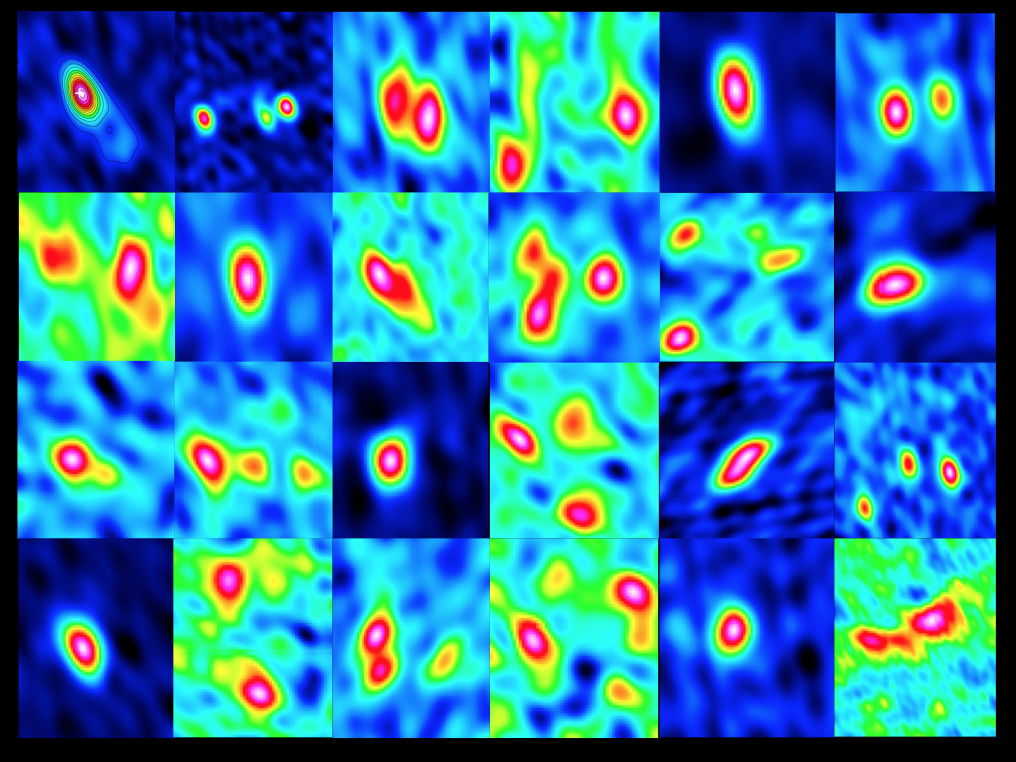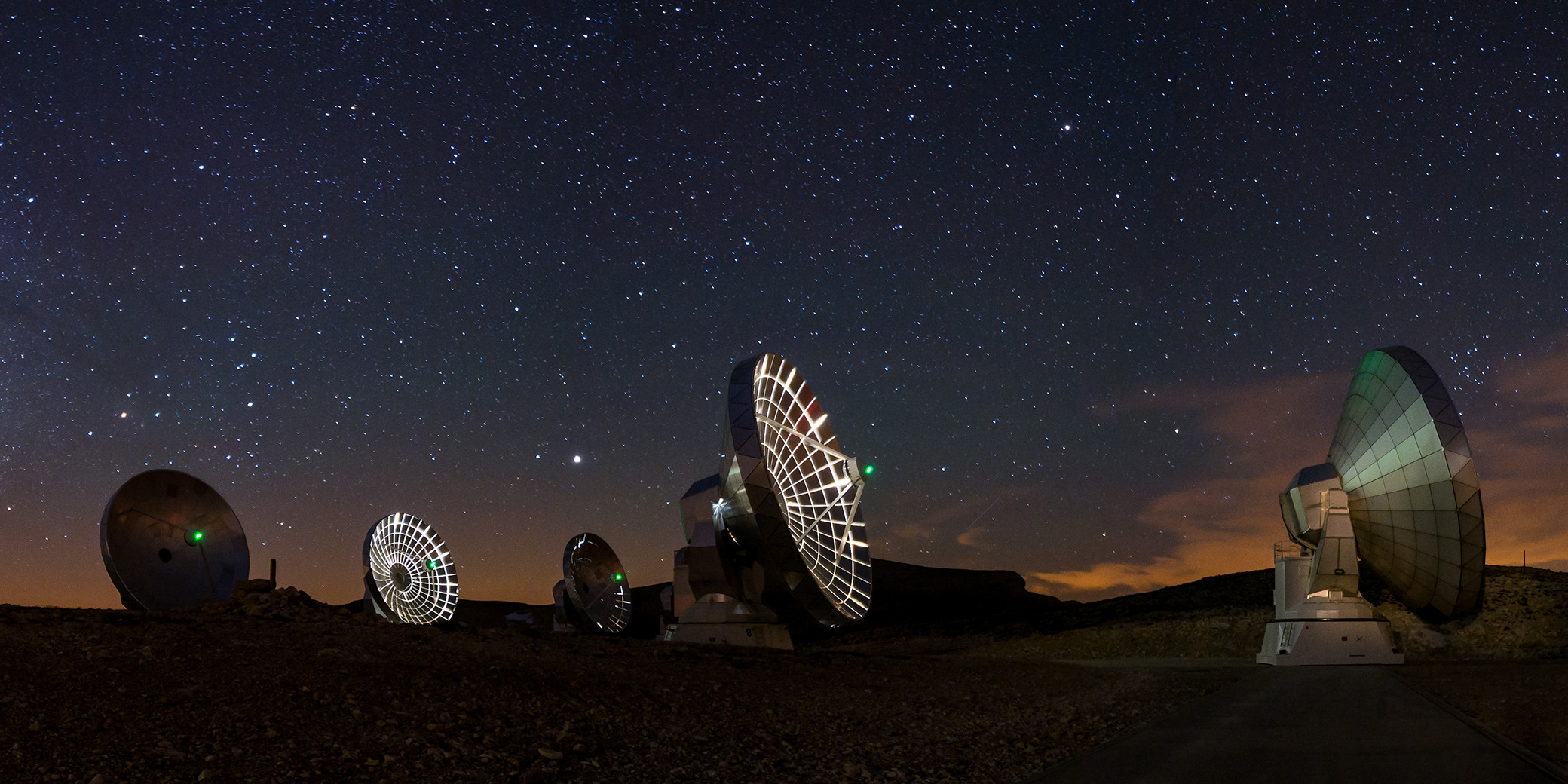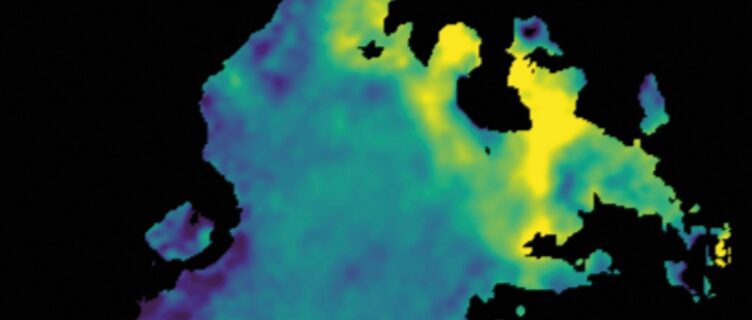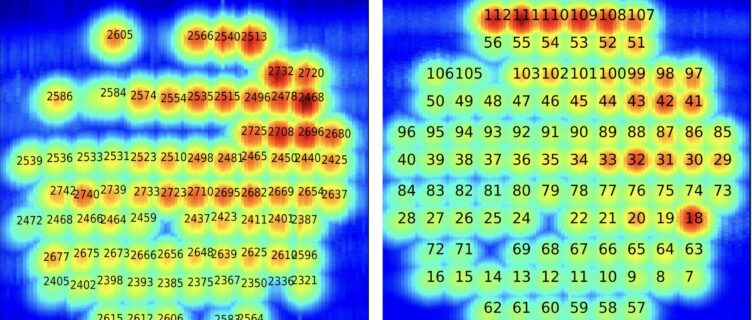Using the NOEMA observatory, an international team of scientists has measured the precise distances for a large (135 sources) sample of the brightest galaxies selected from surveys done with the Herschel telescope. Robust values of the distances were derived for all sources, based on the detection of at least two emission lines for each object, making it the largest sample of high-z galaxies with unambiguous redshifts to date, and doubling the number of Herschel galaxies with such measurements. The results are published in three papers that appeared this week in Astronomy & Astrophysics.
A population of massive, dust-enshrouded galaxies forming stars at enormous rates in the early Universe has been revealed in the last two decades by surveys in the far-infrared and sub-millimeter wavebands opening up a new window into our understanding of the formation and evolution of galaxies. In particular, the wide-field extragalactic imaging surveys carried out with the Herschel Space Observatory, in conjunction with other notable surveys conducted with the Planck satellite and the South Pole Telescope, have increased the number of known dust-obscured star-forming galaxies from hundreds to several hundreds of thousands. These luminous galaxies are among the brightest in the Universe with infrared luminosities in excess of thousand billion times the luminosity of the Sun and are very active, forming stars at rates of thousand solar masses per year. The exact nature of these luminous galaxies is still debated, although many of them are likely interacting galaxies. Dust-obscured star-forming galaxies are most commonly found at cosmic times around 1.5 to 3 billion years after the Big Bang, when the densities of star formation and black hole accretion peaked and the gas accretion onto galaxies reached its maximum. These galaxies therefore play a critical role in the history of cosmic star formation as the locus of the physical processes driving the most extreme phases of galaxy formation and evolution.
Detailed follow-up studies of these luminous galaxies require precise estimates of their distances to investigate their nature and physical properties. The dust obscuration makes optical and near-infrared spectroscopy using even the largest ground-based facilities difficult, if not impossible. However, measuring molecular or atomic emission lines in the sub-millimeter range has proved to be the most reliable method to derive secure reliable distance information for these dust-obscured objects. By detecting at least two emission lines from molecules (carbon monoxide or water) or atomic carbon that are shifted into the millimeter wavelength range due to the expansion of the universe, one can determine the distance to the object, provided the lines have been properly identified.

Combined continuum and emission lines maps of selected sources from the z-GAL survey showing the diversity of the observed galaxies. Credits: IRAM/CNRS.
Building upon a previous Pilot Study using the NOEMA observatory, a team of scientists has extended this first study by measuring, based on the detection of at least two emission lines, precise spectroscopic redshifts for a total of 135 luminous infrared galaxies selected from the Herschel surveys. The galaxies are found to be centered on the peak epoch of galaxy evolution, around 2.5 billions years after the Big Bang, with the most distant object located only 0.8 billions years after the universe was created. This represents the largest and most comprehensive sample measured to date. The key to this important survey is the unique instrumentation of NOEMA (receivers and correlator) which allows to cover a very wide frequency range.
“Not only do the results provide unambiguous distances to each galaxy but the high-quality and spatial resolution of the data that were obtained reveal their morphology and physical properties, such as molecular gas masses and star formation efficiencies, yielding, in addition, key information on the cold dust in these systems” explains Pierre Cox, CNRS researcher at the Institut d’Astrophysique de Paris and lead coordinator of the z-GAL project. “Most of the sources remain unresolved or barely resolved but some fields included double or multiple sources seen in emission lines and the underlying dust continuum and, in some cases, sources at different redshifts. On-going and future follow-up observations will enable to further explore these remarkable galaxies in the early universe.”
Further information
Results from the z-GAL survey are published in three recent papers in Astronomy & Astrophysics that report on various aspects of the available data, namely: Paper I that that describes the selected sample, presents the observations and the details of the data processing, and summarizes the basic results of the survey (Cox et al. 2023, A&A, 678, A26); Paper II that discusses the dust continuum properties of the sources and presents a detailed study of the dust properties and their evolution with redshift (Ismail et al. 2023, A&A, 678, A27); Paper III that reports on the physical properties of the sources derived from the molecular and atomic gas and the dust, including the excitation conditions, the depletion time scales and first estimates of the stellar masses (Berta et al. 2023, A&A, 678, A28).
z-GAL is an IRAM Large Program conducted with the Northern Extended Millimeter Array by a world-wide collaboration (France / Germany/ Spain / UK / Sweden/ Italy / The Netherlands / Denmark / Poland / USA / Japan / Mexico / Chile / South-Africa). The Principal Investigators of this Large Program are Pierre Cox (IAP/CNRS), Tom Bakx (Nagoya, Japan/Chalmers, Sweden) and H. Dannerbauer (IAC, Spain).
Special thanks are given to the members of the z-GAL Tiger- and Cat-Teams for their relentless efforts and dedication to calibrate, reduce, and, after a critical review, produce the final catalogue, containing all the relevant data and the information on the emission lines and continuum for the entire sample
This work presentation/publication has received funding from the project Z-GAL ANR-AAPG2019 of the French National Research Agency (ANR).
Science contacts
Pierre Cox, CNRS, Institut d’Astrophysique de Paris
Roberto Neri & Stefano Berta, IRAM
Press contact
Karin Zacher, IRAM Press Office, +33 476 82 21 03
Our latest updates
Explore all the latest news from our research and technology groups and never miss out on important upcoming events.














